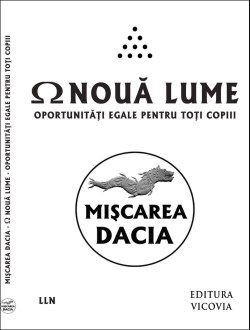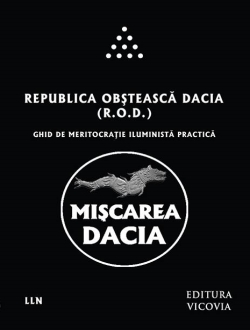Hyperian History Of The World (17th Century, Part 2)
Hyperian History Of The World (17th Century, Part 2)
The 17th Century saw the true rebirth of philosophy; philosophy finally freed from the constraints of christianity. But the century also saw the birth of modern science, which would move even further away from the ideas of religion.
The heliocentric theory of the universe developed by Copernicus in the previous century had, of course, been utterly rejected by the church, and many other thinkers and intellectuals had trouble accepting this idea which ran contrary to centuries of thought. However, slowly but surely, the idea crept into the minds of scientists who began to rethink the very way in which they might understand the universe.
Philosophers such as Descartes and Spinoza tended to think in a more mathematical way, thus developing rationalist systems more akin to the ancient greek thinkers. Scientists (or ‘Natural Philosophers’ as they were known then) thought differently. Perhaps scientists were more extroverted individuals in general, but, for whatever reason, rather than thinking rationally within their own minds, scientists looked outwards into the physical world around them, basing their ideas merely on their own observations.
The man often regarded as the father of modern science was the Italian Galileo Galilei. Galileo began to make observations and to perform experiments to support his theories. Experiments sometimes revealed that long standing theories about physics were in fact incorrect. For example, Aristotle had said that an object’s weight determines the speed at which in falls to the ground. Given the reputation of Aristotle, his theory was accepted and never tested for well over a thousand years. Galileo, however, decided to experiment. There is a story (probably not true) which tells of Galileo dropping canon balls of varying sizes from the top of the leaning tower of Pisa and measuring their speed. It is more likely that Galileo actually carried out a more simple experiment but, regardless, the results showed that, no matter the weight of the balls, they all fell to earth at the same speed, contrary to what Aristotle had said.
The fact that a simple experiment could easily prove wrong an idea which had been accepted for such a long time showed that this new, experimental method of science could achieve great things. Galileo’s observational method also proved successful. Thanks to the invention of the telescope, scientists and astronomers could get a much closer look at the heavens and thus could begin to better understand what was going on up there. Using a telescope, Galileo observed the planet Jupiter and realised that there were several smaller bodies which seemed to be orbiting around the planet. This was a momentous discovery, as it seemed to vindicate the heliocentric theory of Copernicus, as well as the complex cosmology of Giordano Bruno. If other planets have moons orbiting them, then the Earth really ceases to be anything special in the universe. We are simply one planet of many orbiting the sun, each other planet having its own smaller system of orbiting moons.
As a result of his observations, Galileo accepted the heliocentric model, which was still controversial. His writings about it attracted the church’s inquisition who tried him and, in 1633, found him to be suspect of heresy. Knowing what had happened to Giordano Bruno, Galileo decided to recant his ideas, thus sparing his life, but he remained under house arrest until his death in 1642. The church still had some power, but they were weakening. Galileo was not killed as Bruno had been, and, despite his recanting, his heretical ideas could not be stopped and began to spread and become more and more accepted. The church were losing their grip and they couldn’t very well keep everyone under house arrest.
Galileo’s methods of observation and experimentation brought about a revolution for science, yet his theories still amounted to little more than speculation. Galileo seemed to be suggesting that the universe was like some kind of huge machine, which operated according to certain laws. But Galileo was simply observing these laws in action, he was not precisely stating what the laws were. More rigour was required for science to get really serious. The rationalist philosophical system of Descartes had a decidedly mathematical underpinning, given that Descartes was a brilliant mathematician. Mathematics was the very quintessence of rationalism that seemed to have little to do with the observational, experimental methods of scientists such as Galileo. However, in a bizarre twist of fate, one scientist turned precisely to mathematics in order to give science much more rigour. This was Isaac Newton.
Newton is a rather strange figure in this history. Despite science seeming to move away from christianity, and Newton playing such an important role in it, he nonetheless remained almost fanatically christian for all his life. In his religious writings, Newton revealed that he regarded himself to be almost like a religious prophet, sent by god to reveal the workings of the universe to humanity. As such, despite the huge impact he had on science, Newton’s theories, from the beginning, were tainted by religious ideas. Rather than build a system of truth from the ground up as did Descartes and Spinoza, or to draw conclusions based upon observations as did Galileo, Newton presupposed certain religious ideas (such as the existence of the christian god) and skewed his theories so as to ‘prove’ those ideas to be true.
For example, Newton is often regarded as the man who ‘discovered’ gravity. Yet when Newton was asked how gravity could possibly work instantaneously even over vast distances, he simply stated that Gravity was god’s will at work, and god can do anything he wants! This hardly seems like science at all, yet Newton is revered by scientists all over the world to this day.
Ultimately, Newton’s theories amount to simple approximations about the physical universe. Being only approximations, these theories can be expressed with rather simple mathematical formulas, yet these formulas give Newton’s science a greater sense of rigour than any scientist had given before. As such, Newton’s science became accepted the world over and was not challenged for centuries, despite his theories being only approximations and despite many of his theories relying on religious ideas taken only on irrational faith!
Despite science seeming to free humanity from the clutches of christianity, Newton’s science has in fact set humanity back for centuries. Newton’s theories were literally too good to be true, yet few were intelligent enough to realise this. Whilst it was a great step forward to mathematise one’s theories, this only works if one’s theories are correct to begin with, and Newton’s simply weren’t. However, in Newton’s own lifetime, there was one who saw through him, one who developed a philosophy based on theories which were correct but who, despite his best efforts, failed to mathematise his theories, not because he lacked the skill, but because his theories were so complex and ahead of their time that the mathematics required to explain them simply hadn’t been discovered. It is this individual who ought to be celebrated as humanity’s greatest genius, but we shall return to him in a later chapter of this history.
– Brice Merci












